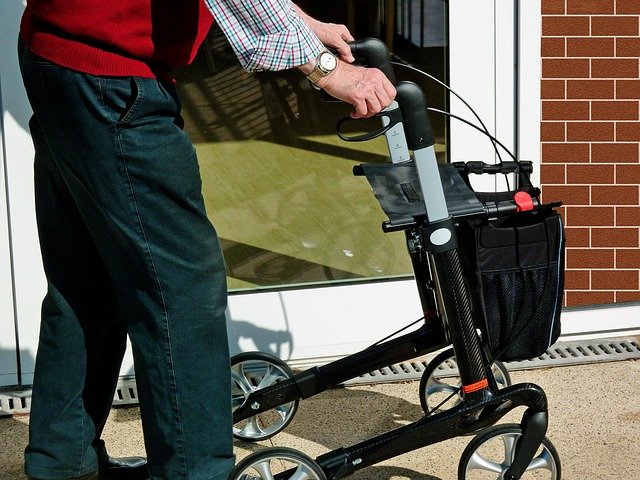A Comprehensive Guide to Senior-Friendly Apartments with Lifts
As seniors age, mobility often becomes a significant concern, making accessibility features in housing increasingly important. Senior-friendly apartments with lift access offer a practical solution for older adults who want to maintain their independence while ensuring their living environment accommodates potential mobility challenges. This guide examines key considerations for finding suitable lift-equipped apartments for seniors, highlighting essential features, benefits, and practical advice for making informed housing decisions.

Understanding Senior-Friendly Apartments with Lift Access
Senior-friendly apartments with lift access are residential units specifically designed or adapted to accommodate the needs of older adults with mobility challenges. These apartments typically feature elevators or lifts that eliminate the need for stair climbing, which can be particularly challenging or dangerous for many seniors. Beyond lift access, these properties often incorporate wider doorways, grab bars, non-slip flooring, and other accessibility features that create a safer living environment for older residents.
Key Features to Look for in Senior-Friendly Apartments with Lift Access
When searching for apartments with lift access suitable for seniors, several critical features deserve attention. First, evaluate the lift itself—is it reliable, properly maintained, and spacious enough to accommodate mobility aids like wheelchairs or walkers? Second, consider the building’s overall accessibility, including ramps at entrances, accessible parking spaces, and automatic doors. Inside the apartment, features such as step-free showers, raised electrical outlets, lower light switches, and kitchen adaptations can significantly enhance quality of life for older residents with mobility limitations.
Benefits of Senior-Friendly Apartments with Lift Access
The advantages of lift-equipped apartments for seniors extend far beyond simple convenience. These accommodations provide crucial safety benefits by reducing fall risks associated with stairs—a leading cause of injury among older adults. They also promote independence, allowing seniors to navigate their homes without assistance and potentially extending their ability to age in place. Furthermore, lift access can reduce physical strain and fatigue, conserving energy for more meaningful activities. Finally, these apartments often foster greater social connection by making it easier for seniors to leave their homes and engage with the broader community.
How to Find Senior-Friendly Apartments with Lift Access
Finding appropriate senior-friendly apartments requires a strategic approach. Start by exploring dedicated senior living communities, which typically feature comprehensive accessibility features including reliable lift access. Online housing platforms often allow filtering searches by accessibility features, though it’s advisable to verify these details directly. Local senior service organizations and Area Agencies on Aging can provide valuable guidance and referrals. Working with real estate agents who specialize in senior housing needs can also streamline the search process, connecting you with suitable options that might not be widely advertised.
Senior-Friendly Apartments with Lift Access Insights: Evaluating Locations
Location considerations are paramount when selecting senior-friendly apartments. Proximity to healthcare facilities, pharmacies, and hospitals becomes increasingly important as mobility decreases. Access to grocery stores, community centers, and senior-oriented activities within walking distance or via accessible public transportation enhances quality of life. Additionally, evaluate the neighborhood’s walkability, including the presence of curb cuts, well-maintained sidewalks, and pedestrian-friendly crossings. Climate factors may also influence decisions, as extreme weather conditions can compound mobility challenges for seniors.
Cost Considerations for Senior-Friendly Apartments with Lift Access
Senior-friendly apartments with lift access generally command higher rental rates compared to non-accessible units due to their specialized features and increased demand. Monthly costs vary significantly based on location, amenities, and whether the community offers additional services.
| Housing Type | Monthly Rent Range | Additional Features | Typical Service Fees |
|---|---|---|---|
| Independent Living with Lift Access | $1,500 - $3,500 | Social activities, maintenance | $0 - $500 |
| Assisted Living with Lift Access | $3,500 - $6,000 | Meals, housekeeping, personal care | Included in monthly fee |
| Urban Accessible Apartment | $1,800 - $4,000 | Limited services, building amenities | $100 - $300 |
| Suburban Accessible Apartment | $1,200 - $3,000 | Limited services, more space | $50 - $200 |
Prices, rates, or cost estimates mentioned in this article are based on the latest available information but may change over time. Independent research is advised before making financial decisions.
Making the Transition to Senior-Friendly Housing
Transitioning to a lift-equipped apartment often requires careful planning. Start by downsizing possessions thoughtfully, focusing on items that will fit comfortably in the new space while preserving those with significant emotional value. Consider hiring senior move managers who specialize in helping older adults relocate. These professionals can coordinate logistics, arrange furniture placement to maximize accessibility, and ensure the new environment supports independence from day one. Additionally, explore available financial assistance programs, including housing subsidies, tax credits, or veterans’ benefits that might help offset costs associated with accessible housing.
Senior-friendly apartments with lift access represent an important housing option that can significantly enhance quality of life for older adults facing mobility challenges. By understanding the key features, benefits, and considerations outlined in this guide, seniors and their families can make informed decisions that support independence, safety, and comfort in the later years. As the population continues to age, the availability and quality of accessible housing options will remain an essential component of healthy aging strategies across communities.




